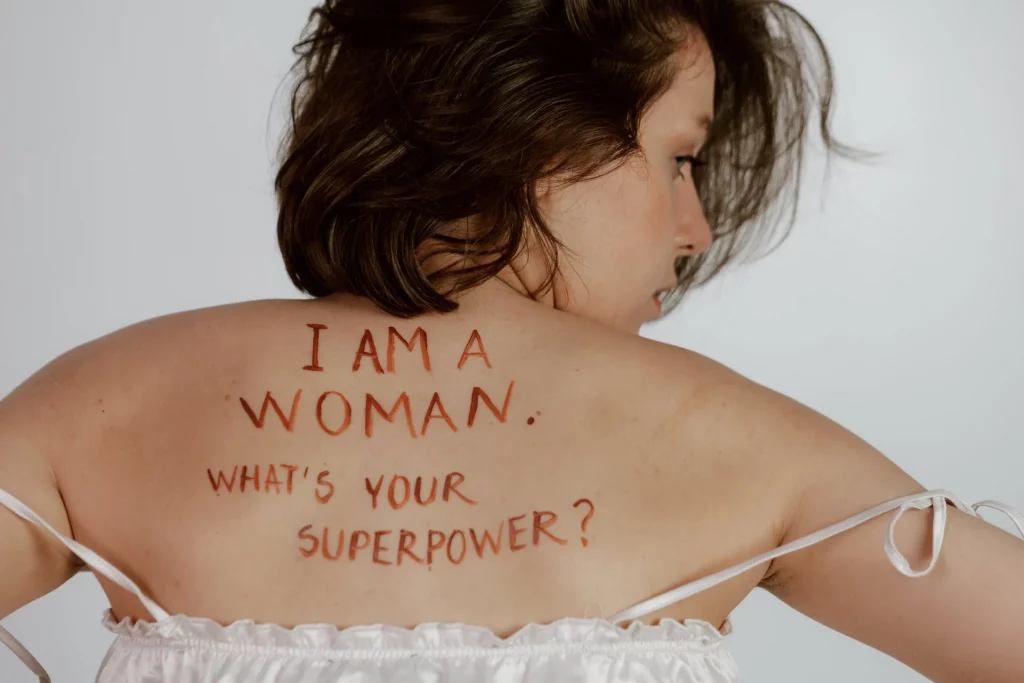Table of Contents
Female-Led Relationships (FLR) are a fascinating and empowering form of romantic partnership that challenge traditional gender roles and incorporate a unique dynamic. In these relationships, women take the lead role, making decisions and setting the tone for the relationship. Harmony in FLR is based on equality, trust, and open communication, creating a strong foundation for a loving and fulfilling connection.
One of the key aspects of FLR is that women have the authority and control, not only in the relationship but also in various aspects of their lives together. This can manifest in different ways, depending on the couple’s preferences and agreements. Some FLRs may involve the woman making all major decisions, such as finances, household matters, and even the couple’s social life. Others may focus on specific aspects, like the woman taking the lead in career-related decisions, while other areas are shared responsibilities.
In FLRs, the power dynamics are consensually shifted, allowing the woman to express her desires, aspirations, and expectations openly. This promotes an environment of trust, respect, and support, where both partners actively work together to achieve their individual and shared goals. Such a relationship dynamic can lead to a deep emotional connection and a strong sense of partnership, as both partners have the freedom to explore their desires and grow as individuals. Another important aspect of FLRs is that they challenge societal norms and expectations surrounding gender roles.
Traditionally, men have been seen as the dominant figures in relationships, making important decisions and being the primary earners. However, FLRs provide an opportunity for women to break free from these stereotypes and embrace their natural leadership qualities. This shift in power dynamics can benefit both partners, as it allows men to explore their vulnerability and relinquish control, while women can embrace their strength and assertiveness.
FLRs also provide a nurturing and supportive environment, where the woman becomes the guiding force for personal growth and development. She encourages her partner to explore new possibilities, overcome challenges, and become the best version of himself. This creates a sense of security and encouragement, as both partners thrive in an environment that celebrates their strengths and supports their weaknesses. It is important to note that FLRs are based on mutual consent and discussion. Open communication and negotiation are vital to ensure that both partners are comfortable with the power dynamics and that boundaries are respected.
FLRs are not about exerting control or dominance over one another, but rather creating a relationship where both partners feel valued, respected, and fulfilled. In conclusion, FLRs present a unique and empowering dynamic in relationships, challenging traditional gender roles and fostering equality. With open communication and mutual consent, women can embrace their leadership qualities, while men can explore vulnerability and personal growth. Harmony in FLR provide a nurturing and supportive environment where both partners can thrive, creating a deep emotional connection and a strong sense of partnership.

Understanding Power Dynamics in FLRs
In the unique landscape of Female-Led Relationships (FLRs), power dynamics are not merely incidental but central to the relationship’s identity and functionality. The way power is negotiated, distributed, and respected within the relationship can significantly impact the satisfaction, harmony in FLR , and growth experienced by both partners.
Definition of Power Dynamics:
Power dynamics refer to the way power, control, and influence are distributed and exercised within a relationship. This includes who makes decisions, who holds authority over certain areas, and how conflicts are resolved. Power can manifest in various forms, including emotional, financial, physical, or intellectual, and can be affected by individual personality traits, societal norms, and the unique agreement between the partners.
Power Dynamics in Relationships:
- Decision-Making:
- In every relationship, decisions need to be made, ranging from minor day-to-day choices to major life-altering decisions. Who has the say in these decisions, and how are the decisions made, reflects the power dynamic of the relationship.
- Control Over Resources:
- This refers to who controls resources such as money, assets, and time. It also extends to access to shared or individual resources and how these are managed within the relationship.
- Influence Over Behavior:
- Influence over a partner’s behavior, choices, or actions is another reflection of power dynamics. This can manifest in various ways, from subtle suggestions to overt demands.
- Conflict Resolution:
- How conflicts are resolved, who compromises, and how solutions are reached are crucial aspects of power dynamics. It reflects how power is negotiated and balanced during challenging times.
- Expression of Needs and Wants:
- The ability to express one’s needs, desires, and concerns openly, and have them acknowledged and addressed, is a sign of a balanced power dynamic.
- Boundary Setting:
- Setting, communicating, and respecting boundaries is an integral part of power dynamics. It indicates a level of respect and understanding between partners.
Factors Influencing Power Dynamics:
- Individual Attributes: Personality traits, communication skills, self-esteem, and personal beliefs can significantly influence power dynamics.
- Societal Norms: Societal expectations and traditional gender roles can also play a significant role in shaping power dynamics within relationships.
- Relationship Agreement: The explicit or implicit agreement between partners on how power is distributed and exercised.
Harmony in FLR : The Importance of Power Dynamics :
Power dynamics are central to Female-Led Relationships (FLRs) and significantly impact the satisfaction, harmony, and growth of the relationship. In FLRs, power dynamics are defined through a consensual agreement where the female partner assumes a leading role. Balanced power dynamics foster respect, trust, enhanced communication, and constructive conflict resolution, promoting individual and relationship growth.
Challenges may arise if power dynamics are not well-negotiated or external pressures interfere. Continuous communication, reflection, and adaptation are essential to ensure that the power dynamics evolve positively, maintaining a fulfilling and enriching Harmony in FLR.

Communication
In the realm of Female-Led Relationships (FLRs), effective communication is the linchpin that holds the delicate balance of power together. It’s through communication that partners can express their desires, set boundaries, and navigate the unique dynamics that FLRs entail. This section delves into the role of communication in FLRs, techniques to enhance it, and a case study illustrating its impact on balancing power.
The Role of Open, Honest Communication:
- Expressing Desires and Expectations:
- In an FLR, it’s crucial for both partners to openly express their desires and expectations regarding the power dynamics and other aspects of the relationship. This transparency lays the foundation for a mutual understanding and agreement on how the relationship will function.
- Navigating Power Dynamics:
- Communication is the tool through which partners navigate the power dynamics in an FLR. Through discussions and negotiations, they can find a balance that suits their individual and collective needs.
- Resolving Conflicts:
- Conflicts are inevitable in any relationship, and in FLRs, effective communication is key to resolving them in a way that maintains the balance of power and respects the agreed-upon dynamics.
Techniques for Effective Communication in FLRs:
- Active Listening:
- It’s vital to listen to your partner’s concerns, desires, and feedback actively and empathetically. This fosters a safe space for open dialogue and mutual respect.
- Non-verbal Communication:
- Pay attention to body language, facial expressions, and tone of voice as they can convey messages just as powerfully as words.
- Use “I” Statements:
- Expressing feelings and concerns using “I” statements can prevent blame and promote understanding. For example, “I feel respected when you consult me before making decisions.”
- Seek to Understand:
- Strive to understand your partner’s perspective rather than to win an argument. This promotes a collaborative rather than adversarial approach to communication.
- Practice Patience and Tolerance:
- Communication in FLRs may require extra patience and tolerance, especially when navigating complex power dynamics.
Case Study: Effective Communication in Action:
- Background:
- Jane and John are in a loving FLR. However, they hit a snag when John started feeling overwhelmed with his lack of input in financial decisions.
- Resolution:
- Through open communication, Jane understood John’s concerns and they agreed on a system where John could voice his opinions, while Jane retained the final say. This not only resolved the issue but strengthened their trust and respect for each other.
- Outcome:
- This case illustrates how effective communication can help navigate the intricacies of power dynamics in FLRs, ensuring that the relationship remains balanced and harmonious.
Communication is a skill that can be honed over time and with practice. In the context of FLRs, it’s a vital component in ensuring the power dynamics serve to enrich the relationship rather than strain it. Through effective communication, couples can achieve a harmonious balance of power, fostering a fulfilling and empowering FLR.
No schema found.Setting and Respecting Boundaries
Boundaries are crucial in any relationship, but they take on a unique significance in Female-Led Relationships (FLRs) where the balance of power is a defining feature. Establishing and respecting boundaries is essential for maintaining a harmonious and empowering dynamic. This section will delve into the importance of boundaries, how to set and communicate them, and a case study illustrating the impact of boundaries on power balance in an FLR.
Importance of Setting Clear Boundaries:
- Clarity in Roles and Expectations:
- Boundaries help delineate the roles and expectations within the relationship, creating clarity for both partners on the limits and freedoms inherent in their FLR dynamic.
- Protection of Personal Space and Autonomy:
- Each individual’s personal space and autonomy should be respected, and boundaries provide a framework for this respect.
- Conflict Prevention:
- Many conflicts arise from misunderstandings or overstepping of boundaries. Clear boundaries help prevent such conflicts or provide a basis for resolving them.
How to Set, Communicate, and Respect Boundaries in an FLR:
- Open Discussion:
- Engage in open discussions to establish boundaries, ensuring that both partners have a clear understanding and agreement on what those boundaries are.
- Explicit Communication:
- Be explicit and clear in communicating boundaries to prevent misunderstandings. It’s important to use clear language and ensure understanding.
- Continuous Review:
- Relationships evolve, and so may the boundaries. Regular reviews of boundaries ensure they remain relevant and respected.
- Mutual Respect:
- Respecting the set boundaries is crucial for maintaining trust and the agreed-upon power dynamic in the FLR.
- Seeking Understanding:
- If a boundary is unclear or causes discomfort, seeking understanding and clarification from the partner is essential.
Case Study: Boundary Setting and its Impact on Power Balance:
- Background:
- Sarah and Mark are in an FLR. They faced challenges when Mark felt his input wasn’t valued in certain decisions, causing tension.
- Resolution:
- Through a discussion, they set clear boundaries regarding decision-making processes, establishing a mechanism for Mark to voice his opinions while respecting Sarah’s final decisions.
- Outcome:
- The clear boundaries helped alleviate the tension, allowing for a balanced power dynamic where both felt respected and valued.
- Lesson:
- This case highlights the importance of setting and respecting boundaries to maintain harmony and the desired power balance in an FLR.
Setting and respecting boundaries in an FLR is a dynamic and ongoing process that requires open communication, understanding, and respect from both partners. It’s a crucial aspect that contributes significantly to the satisfaction and success of the relationship, ensuring that the unique power dynamics of an FLR are navigated in a healthy and fulfilling manner.

Nurturing Trust and Respect
Trust and respect are the cornerstones of a healthy and harmonious Female-Led Relationship (FLR). The unique power dynamics inherent in FLRs necessitate a solid foundation of trust and respect to thrive and evolve. This section explores the process of building trust, the role of respect in supporting balanced power dynamics, and a case study that illustrates how trust and respect contribute to harmony in an FLR.
Building Trust as a Foundation for Balanced Power Dynamics:
- Open Communication:
- Transparency in communication fosters trust. Sharing thoughts, concerns, and expectations openly helps build a foundation of trust that’s essential for navigating the power dynamics of an FLR.
- Consistency in Actions and Words:
- Consistency between what one says and does reinforces trust. It’s crucial for actions to align with words to build and maintain trust in the relationship.
- Reliability and Dependability:
- Being reliable and dependable in fulfilling responsibilities and commitments contributes to trust-building.
- Conflict Resolution:
- Addressing conflicts in a fair and respectful manner promotes trust. It’s important to have constructive conflict resolution strategies that uphold the values and boundaries of the relationship.
The Role of Respect in Supporting and Maintaining Balanced Power Dynamics:
- Acknowledgement of Roles:
- Respecting the defined roles within the FLR, and appreciating each other’s contributions, fosters mutual respect and understanding.
- Valuing Opinions and Input:
- Even in a female-led dynamic, the opinions and input of both partners should be valued and considered, promoting a respectful and collaborative environment.
- Respect for Boundaries:
- Respecting the set boundaries is a manifestation of respect for each other’s needs, preferences, and the agreed-upon power dynamics.
Case Study: How Trust and Respect Contributed to Harmony in an FLR:
- Background:
- Lisa and Tom have been in an FLR for several years. They faced a challenge when Tom felt his ideas were being dismissed, impacting the trust between them.
- Resolution:
- Through open discussions and active listening, they established a more inclusive decision-making process, ensuring Tom felt valued while maintaining the female-led dynamic.
- Outcome:
- This adjustment fostered deeper trust and respect between Lisa and Tom, enhancing the harmony and satisfaction within their FLR.
- Lesson:
- The case underscores the importance of nurturing trust and respect in maintaining a balanced and harmonious power dynamic in FLRs.
Trust and respect are not just foundational elements but are continuously nurtured attributes that significantly impact the quality, satisfaction, and success of an FLR. Through open communication, consistent actions, respect for each other’s roles, and valuing each other’s input, couples can cultivate a thriving, balanced, and harmonious female-led dynamic that enriches their relationship.
Exploring and Accepting Different Roles
The essence of Female-Led Relationships (FLRs) often lies in the distinct roles partners assume. However, the fluidity of roles and the ability to adapt to changes are equally crucial for the growth and harmony of the relationship. This section delves into understanding and embracing the roles within an FLR, adjusting roles to address changes in the relationship or individual needs, and a case study of a couple’s journey in exploring and accepting different roles in their FLR.
Understanding and Embracing Roles within an FLR:
- Defining Roles:
- Roles in an FLR should be defined based on mutual agreement, considering the strengths, preferences, and comfort levels of both partners.
- Embracing the Dynamic:
- Acceptance and embracement of the roles are crucial for the smooth functioning and satisfaction within an FLR.
- Education and Awareness:
- Educating oneself about the dynamics of FLRs and the implications of various roles can lead to better understanding and acceptance.
Adjusting Roles to Address Changes:
- Flexibility:
- Flexibility in roles allows the relationship to adapt to changes, be they personal, professional, or relational changes.
- Open Dialogue:
- Having open dialogues about the satisfaction with current roles and any desired changes is crucial for maintaining harmony.
- Trial and Adjustment:
- Trying out new roles or adjustments in a supportive and open environment allows for exploration and finding what works best for the relationship.
Case Study: A Couple’s Journey in Exploring and Accepting Different Roles in their FLR:
- Background:
- Emily and Alex have been in an FLR for a couple of years. They faced challenges when Emily’s new job required more time, shifting some household responsibilities to Alex.
- Exploration:
- Through communication and trial, they explored different arrangements to balance their new circumstances while maintaining the female-led dynamic.
- Outcome:
- They found a new balance that suited their changed circumstances, enriching their relationship and understanding of each other.
- Lesson:
- The case illustrates the importance of flexibility, communication, and the willingness to explore and adjust roles for the harmony and growth of the FLR.
Roles in an FLR are not rigid constructs but evolving aspects that should serve the well-being and satisfaction of both partners. Through understanding, acceptance, open dialogue, and a willingness to adapt, couples can navigate the nuances of roles in their FLR, ensuring that the relationship remains fulfilling, balanced, and harmonious through life’s inevitable changes.

Conflict Resolution
Conflict is a natural part of any relationship, and in Female-Led Relationships (FLRs), where a unique power dynamic exists, addressing and resolving conflict in a balanced and respectful manner is crucial. This section delves into common conflicts arising from power imbalances, techniques for resolving these conflicts, and a case study illustrating how a couple resolved a major conflict by addressing the power imbalance.
Common Conflicts Arising from Power Imbalances:
- Decision-Making Disagreements:
- Disputes may arise over decision-making processes, especially if one partner feels their input is not valued or considered.
- Boundary Violations:
- Conflicts can occur if boundaries set within the relationship are violated or disrespected.
- Role Discontent:
- Discontent with the established roles or the power dynamic itself can lead to conflicts within the FLR.
- External Pressures:
- External societal or family pressures regarding the unconventional power dynamic of an FLR can also be sources of conflict.
Techniques for Resolving Conflicts:
- Open Communication:
- Discuss the issue openly, ensuring both partners feel heard and understood.
- Active Listening:
- Practice active listening to understand each other’s perspectives and concerns fully.
- Respectful Negotiation:
- Engage in respectful negotiation to find solutions that honor the values and boundaries of the FLR while addressing the conflict.
- Seeking External Support:
- If necessary, seek external support from counselors or support groups specializing in FLRs or alternative relationship dynamics.
- Reflection and Learning:
- Reflect on the conflict and the resolution process to learn and grow from the experience, strengthening the relationship.
Case Study: Resolving Major Conflict by Addressing Power Imbalance:
- Background:
- Kate and Jack, engaged in an FLR, encountered a major conflict when Jack felt overly controlled and wished for more collaborative decision-making.
- Resolution:
- Through open communication and negotiation, they adjusted the decision-making process to be more inclusive while maintaining the female-led dynamic.
- Outcome:
- The adjustment led to a more harmonious relationship, showcasing the importance of addressing and resolving conflicts in a balanced and respectful manner.
- Lesson:
- The case highlights how resolving conflicts by addressing power imbalances can lead to a more balanced and satisfying FLR dynamic.
Conflict resolution in an FLR requires a blend of open communication, understanding, respect, and willingness to adapt. By employing these strategies, couples can navigate through conflicts in a manner that upholds the values of their FLR, ultimately enhancing the harmony, satisfaction, and growth within their unique relationship dynamic.
Seeking External Support
Title: Seeking External Support
Navigating the nuanced dynamics of a Female-Led Relationship (FLR) can sometimes require external input or support to ensure a balanced, healthy, and satisfying relationship for both partners. Seeking external support in the form of counseling, support groups, or educational resources can provide valuable insights, tools, and perspectives to enhance the FLR dynamic. This section explores when and why to seek external support, the benefits of doing so, and resources for finding support and further learning.
When and Why to Seek External Support:
- Conflict Resolution:
- Persistent conflicts or disagreements that are challenging to resolve internally may warrant external support for objective mediation and resolution.
- Navigating Transition Phases:
- Transition phases, whether entering an FLR or experiencing significant life changes, can benefit from external guidance and support.
- Enhancing Understanding:
- External support can provide education and a deeper understanding of the FLR dynamic, helping to enhance the relationship.
- Validation and Community:
- Sometimes, validation from external sources or connecting with a community of individuals in similar relationship dynamics can be empowering and reassuring.
Benefits of External Support:
- Objective Insights:
- Professional counselors or support groups can offer objective insights and advice, providing a fresh perspective on the FLR dynamic.
- Skill Building:
- Learn new communication, conflict resolution, and relationship-building skills that can be applied to enhance the FLR.
- Enhanced Understanding:
- Gain a deeper understanding of the FLR dynamic, personal roles within the relationship, and strategies for maintaining a balanced and fulfilling relationship.
- Community Connection:
- Connecting with a community of individuals in similar relationship dynamics can provide a sense of belonging, understanding, and shared experiences.
Resources for Finding Support and Further Learning:
- Counseling:
- Seek counseling from professionals who are knowledgeable about or specialize in alternative relationship dynamics such as FLRs.
- Support Groups:
- Joining support groups, both online and offline, where individuals can share experiences, advice, and support in a safe and understanding environment.
- Educational Resources:
- Exploring books, online courses, and workshops focused on FLRs or alternative relationship dynamics for enhanced understanding and skill-building.
- Online Communities:
- Engaging in online communities dedicated to discussing and supporting FLRs and similar relationship dynamics.
External support can be a valuable resource for couples in an FLR, providing the tools, insights, and community connection to navigate the unique challenges and opportunities inherent in such a relationship dynamic. Whether through professional counseling, support groups, or self-education, seeking external support can significantly contribute to the harmony, understanding, and satisfaction within an FLR.




